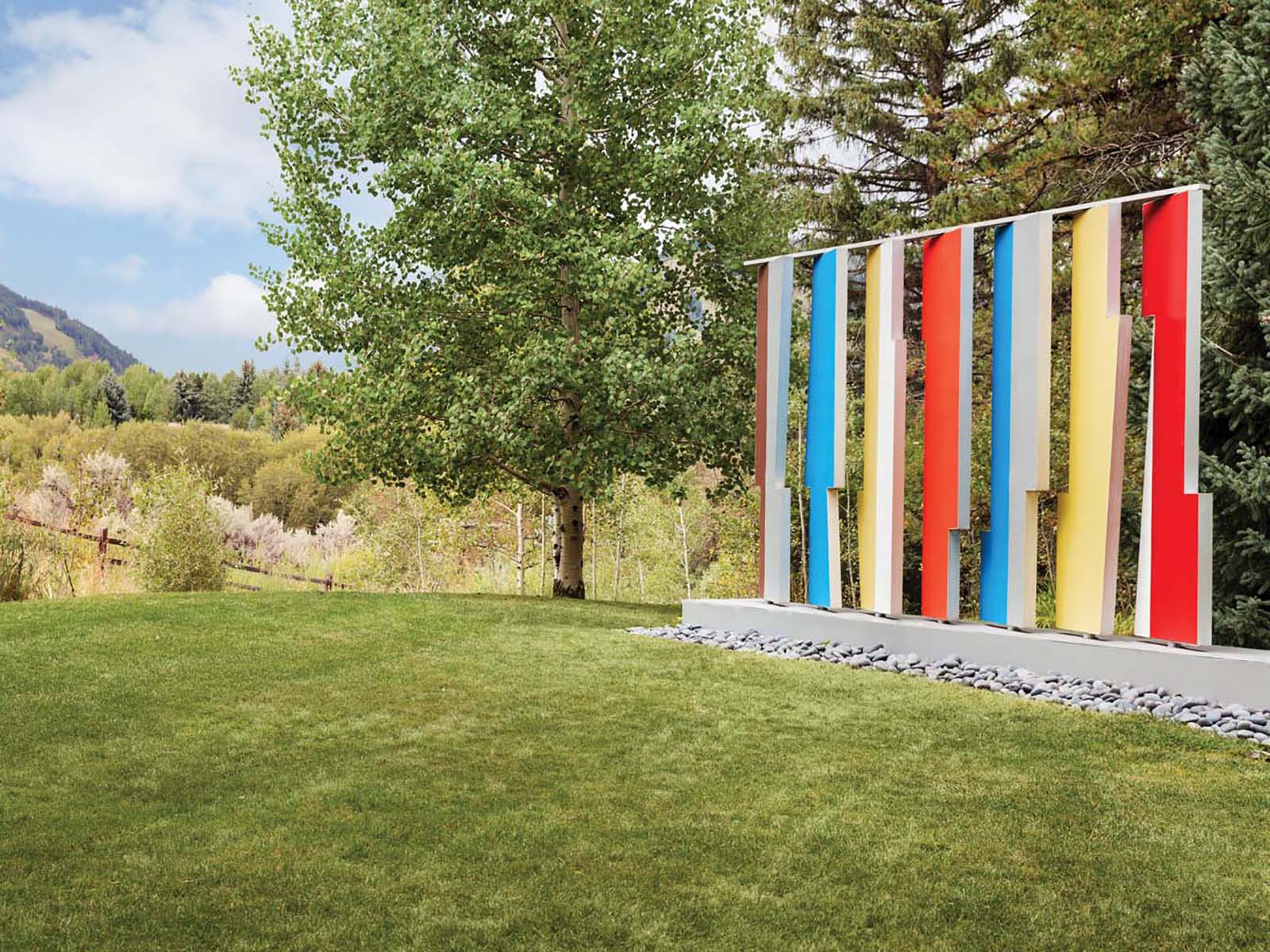The Local newsletter is your free, daily guide to life in Colorado. For locals, by locals.
Historians refer to the five decades between the 1893 silver crash and the end of World War II as Aspen’s “quiet years.” Its economic driver extinguished, the mountain town seemed as if it would be forever stuck in the Victorian era. Then philanthropist couple Walter and Elizabeth Paepcke arrived in the mid-1940s with the aim of developing “a ski town with a highbrow cultural life,” as famed journalist Ted Conover wrote in the New York Times. To achieve that goal, Aspen couldn’t continue to be perceived as old-fashioned. So the Paepckes contacted Herbert Bayer—one of just 32 “masters” (read: teachers) of the German art school Bauhaus—and convinced him to move west.
Founded in 1919, the Bauhaus institution was known for championing modernist ideas of design, such as a functional, minimalist aesthetic. Its followers also believed all art forms, from architecture to typography, were equal. But Adolf Hitler hated modern art, and after Germany’s leader accused them of Communist ties, the Bauhauslers scattered. Many ended up in America. In New York City, Bayer, already celebrated for his work in typography, curated a seminal Bauhaus exhibit at the Museum of Modern Art in 1938—which the Paepckes just happened to catch.

After relocating to the Roaring Fork Valley, Bayer got to work laying the foundation of the city’s rebirth. He designed the Aspen Institute campus, the original Sundeck restaurant on Aspen Mountain, and several residences while also overseeing renovations of the Wheeler Opera House and Hotel Jerome. At the time, Sun Valley Resort ruled as the preeminent ski spot in the West. Rather than copying the Idaho destination’s aesthetic, as other burgeoning ski towns did, Bayer imbued his buildings with telltale Bauhaus elements, such as flat roofs and a bright color palette. “Bayer was instrumental,” says Lissa Ballinger, curator of the Aspen Institute, “in preventing the entire town from becoming this faux Swiss village.”
Bayer’s reputation was as important as his architecture. “Even in competition with millionaire tycoons, best-selling novelists, and top-ranking musicians,” a 1955 Rocky Mountain News story proclaimed, “Herbert Bayer is Aspen’s most world-famous resident.” Along with the Paepckes, he used his renown to draw the high-minded to the city, helping establish Aspen’s reputation as a mecca for thinkers, artists, and businesspeople. In 1951, for example, he co-founded the International Design Conference in Aspen. The inaugural guest list ranged from the president of CBS to modern art legend Josef Albers. Gloria Steinem, Susan Sontag, and Steve Jobs (who predicted Apple would eventually make a “great computer in a book” during his 1983 lecture) would speak at the summit over its five-plus decades.
Most of the structures Bayer designed have been bulldozed or redesigned to make way for younger architects’ changing tastes. Recognition of Bauhaus has waned along with them. “There’s an amazing lack of knowledge about our history,” says Richard Carter, who worked as Bayer’s assistant and co-founded what’s now the Aspen Art Museum. So, this year, the city will host exhibits and programs to honor the 100th anniversary of Bauhaus’ birth, focusing on Bayer’s contributions. Each event, city leaders hope, will stand as a testament to what a little forward thinking can accomplish, even in a quiet mountain town.
Three Events Not to Miss
1. Through April 2020
The Wheeler/Stallard Museum exhibit Bayer & Bauhaus: How Design Shaped Aspen
2. February 5 and 12
Time Travel Tuesdays lectures at the Wheeler Opera House
3. June 6
The Bauhaus Ball gala, also at the opera house









